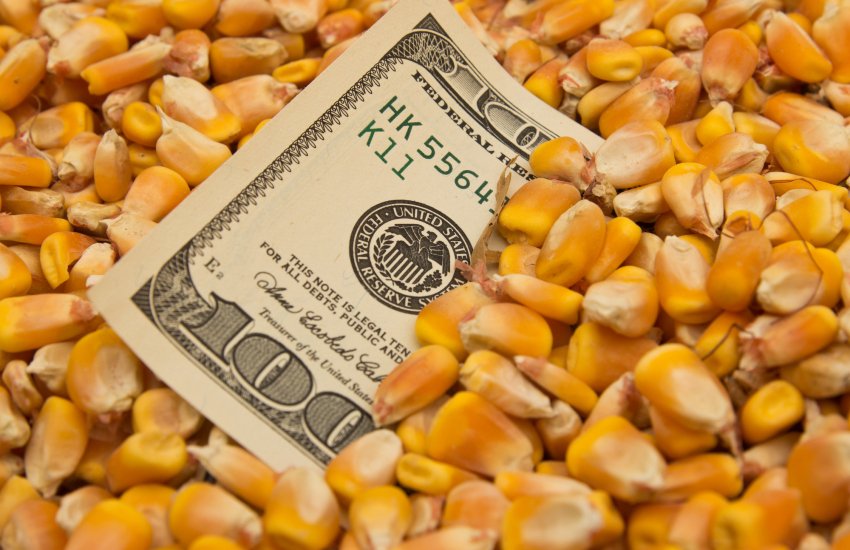U.S.: External market brings CBOT to USD 4.00/bushel, the lowest to corn since 2021

While the US crop of corn has a bias toward cutting the planted area for the 2024 crop, prices on the CBOT now reflect the current high stocks and pressure on the domestic market due to excess supply. In September, a new corn crop will begin, and local logistics will need to provide some flow to the current stocks, freeing up space. Prices dropped to USD 4.00/bushel, the lowest level since 2021, and will still depend on the conditions of the 2024 crop so as not to test lower numbers. On the other hand, low prices accelerate demand, and this is where the market will find its balance point.
Excess losses are corrected by cuts in acreage and effects on future stocks. Excessive highs are corrected by increasing production and slowing demand. Since 2020, when the pandemic began, the commodities market has experienced a three-year cycle of price surges. Despite the recessionary risk and the paralysis of general activities, the intake of resources by governments in their respective countries mitigated the impact via demand. The point is that transport logistics were also affected by shutdowns, bringing global chaos to the supply of inputs and food.
At the same time, the climate turned into a three-year cycle of La Nina, with effects on South America, Europe, and more discreetly the United States. And to complete the picture, a war involving the top wheat-growing country, Russia, and one of the largest exporters in the Black Sea, Ukraine. Also due to the war, rising oil prices, and a historic hike in wheat prices.
It was from this unprecedented combination of factors that corn on the CBOT reached its second-highest price in history, at almost USD 8.00/bushel, starting from USD 4.00/bushel in 2021. This cycle of events ended with the improvement of the pandemic environment, resumption of logistics, and recovery of global supply, in which Brazil played a fundamental role in 2023 with record corn exports of almost 55 mln tons. This provided time for the United States to improve its planted area and generate a record crop in 2023, of around 390 mln tons. Stocks jumped from 34 to 55 mln tons this 23/24 season.
Of course, stocks in full recovery in the United States and the absence of new major global indicators brought prices to their historical rebalance, that is, USD 4.00/bushel for the March expiration on the CBOT, a situation that could have already occurred for the expiration December. We are not witnessing the speculative exercise of funds, government actions, or any other market theory to explain the sharp lows on the CBOT. We are just experiencing a normal situation of prices returning to their average, the same way prices have risen in line with the reality of the pandemic cycle of the last three years.
Now, we have a new 24/25 cycle ahead that will deserve all our attention, because the price of the corn commodity has had a much faster price decline than production factors. Average corn prices were between USD 3.50/3.80 a bushel on the CBOT. Would there be room to create a new step on the average price to USD 4.00/4.30 to rebalance the commodity to the costs of production factors?
This combination of high stocks and a lower price already affects US growers’ decisions. The Planting Intention report to be announced on March 28 has a market bias of a reduction by 3 to 4 mln acres of corn, from 94.6 to 91/92 mln acres. The report tends to confirm or not this bias in the proportion expected by the market. An area below 91 mln acres could even create room for some highs on the CBOT. But an area above 92 mln acres could bring more pressure on new crop maturities, September onward.
Apart from this planting situation, we notice that the wheat/corn ratio today has quite improved in favor of corn. An indicator that could help prices via demand for the 24/25 season. Furthermore, the use of E15 has been approved, a 15% insertion of ethanol in gasoline for Midwestern states. Low prices attract demand and will be the point to be evaluated from now on to avoid greater pressure on prices.
On the other hand, in March, Argentina’s commercial corn crop begins to be reaped. For now, only crops for silage and with lower production potential are beginning to be reaped. FOB prices are currently below USD 190/ton, while Brazilian and US corn are above USD 200/ton. Demand is turning to Argentina, a source of international supply in the first half of the year.
Read also
Ukraine harvest update: Corn 89% complete, sunflower seeds 93%
Saudi Arabia strengthens its position in global grain markets
Kazakhstan may limit potato exports due to crop failure in Russia
Port investments by China in Latin America are reshaping the soybean market
EU introduces “carbon border tax”
Write to us
Our manager will contact you soon



